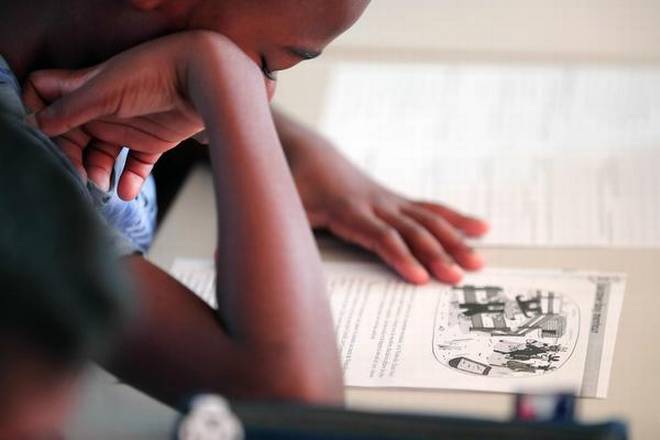India’s large youth demographic is often touted as the country’s biggest (yet-to-be-realised) asset. But the insidious presence of learning disability in its classrooms is often overlooked. In fact, it was only as recently as last year that the Central Government’s Rights of Persons with Disabilities Act included Specific Learning Disability as one of the 21 new health conditions on its list for the very first time.
Specific Learning Disability is a generic term for a group of neuro-behavioural disorders that affects the acquisition and use of skills related to reading (dyslexia), writing (dysgraphia) or arithmetic (dyscalculia) in individuals who otherwise possess normal intelligence.
It is not uncommon for parents and teachers to wrongly associate learning disability with mental retardation.
As experts point out, early intervention and remedial teaching can offset the problem and help to reintegrate learning-disabled children into the mainstream. But awareness about it remains low.
“With any other disability, the signs are very clearly identifiable, but this is a hidden disorder,” says M Prabhavathy, Assistant Professor and Head, Centre for Differently Abled Persons (CDAP), Bharathidasan University. “Our education system at present doesn’t cater to these children, who often get labelled as slow learners.” The Tiruchi-based centre trains educators to spot learning disability and formulate lesson plans for students who are lagging behind in class.
Raising awareness
With few statistical studies on the prevalence of learning disability available in India, those in the field point to a combination of factors that pushes these intelligent children out of society.
Parents who tend to obsess over their child’s academic performance create a situation where the desire to come first in everything assumes an inflated importance.
Children who cannot keep up, show their frustration through excessively rebellious behaviour or withdraw completely from social interaction.
Sometimes this leads to an extreme outcome of learning disability children being sent off to special needs schools.
“The worst thing that can happen to a learning disability child is to have him admitted in a special school where children with severe retardation and other loco-motor disabilities study. It’s a big blow to his or her self-esteem,” says Manasi Uday, a psychologist in Tiruchi.
“Parents have to learn to accept their children as they are, and stop emphasising on grades or certain professions like medicine or engineering as a sign of excellence. There are hundreds of jobs out there that don’t require intensive reading and writing skills,” she says.
Manasi recently organised a seminar to raise awareness about the issue in collaboration with the National Service Scheme (NSS) wing of National College in Tiruchi. She is hoping to create a resource centre dedicated to learning disability in the city.
Certification for special educators is an area that needs greater attention from the authorities, she says. Standardised testing tools are hard to use in a multilingual society, especially when they are in a language that the child is not familiar with.
“Generally parents ask for Intelligence Quotient (IQ) assessment, not learning disability tests, which are in English or Tamil,” says Manasi. “We use the Binet-Kamat Intelligence Test for most preliminary testing. But if the child already has a perception problem, the BKT tool is not accurate, because the child cannot understand the language. The test then is not an assessment of your intelligence, but of your knowledge of the language, so how can it guide us in spotting learning disability?”
Retraining
How effective is remedial teaching? Teachers can be trained to spot and rectify mild to moderate learning disability in the current education system, but severe cases will require specialist care, says Manasi.
“Any child before the age of 8 can be trained successfully through remedial teaching because he or she doesn’t have to unlearn a lot,” she says.
“It is a sad fact of schooling that kids who don’t fit in are often bullied or ridiculed by their peers. Learning disability kids tend to be socially withdrawn, and after the age of 12, it becomes harder to apply basic modes of remedial instruction.
“Teachers have to be very patient, and adjust the pace of the lessons to their level of understanding. You can see results in a matter of weeks or at the most, a year of remedial teaching,” she adds. What about children in the State board schools whose learning disability is diagnosed late because of the ‘no-fail’ policy until Class 8?
“Such children should be given an opportunity to shift to vocational education after senior school, because they are quite creative,” says Dr Prabhavathy of CDAP. “The only other option for them is to drop out from schooling completely.”
A few mainstream schools in the city have opted to coach their learning disability students during vacations. SBIOA Matriculation and Higher Secondary School, for instance, identified learning disability in 13 children from Class 1 to 5 last year, and offered them remedial classes during the holidays.
“The result was quite positive, so we are planning to repeat it in the forthcoming academic year,” says the school’s principal V Ambujam.
“Besides training our staff, we had to counsel the parents first to accept the situation, and not to rush their children to do well in studies.”
With even Government schools in the State having tech-savvy classrooms now, the time is right for education to be more inclusive, says Dr Prabhavathy.
“Rather than pinpointing learning-disabled children through special classes and courses and embarrassing them among their peers, we should be working towards a classroom that accommodates students of differing capabilities with all-inclusive lesson plans,” she says. “This is quite possible with educational software.”
Psychologist Manasi agrees. “There are some 25 apps available for learning disabled education — why can’t we create something that works for all?”
Source:-thehindu




